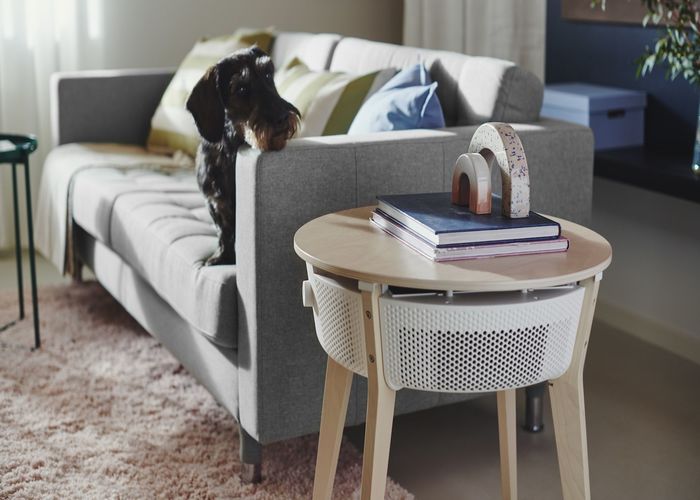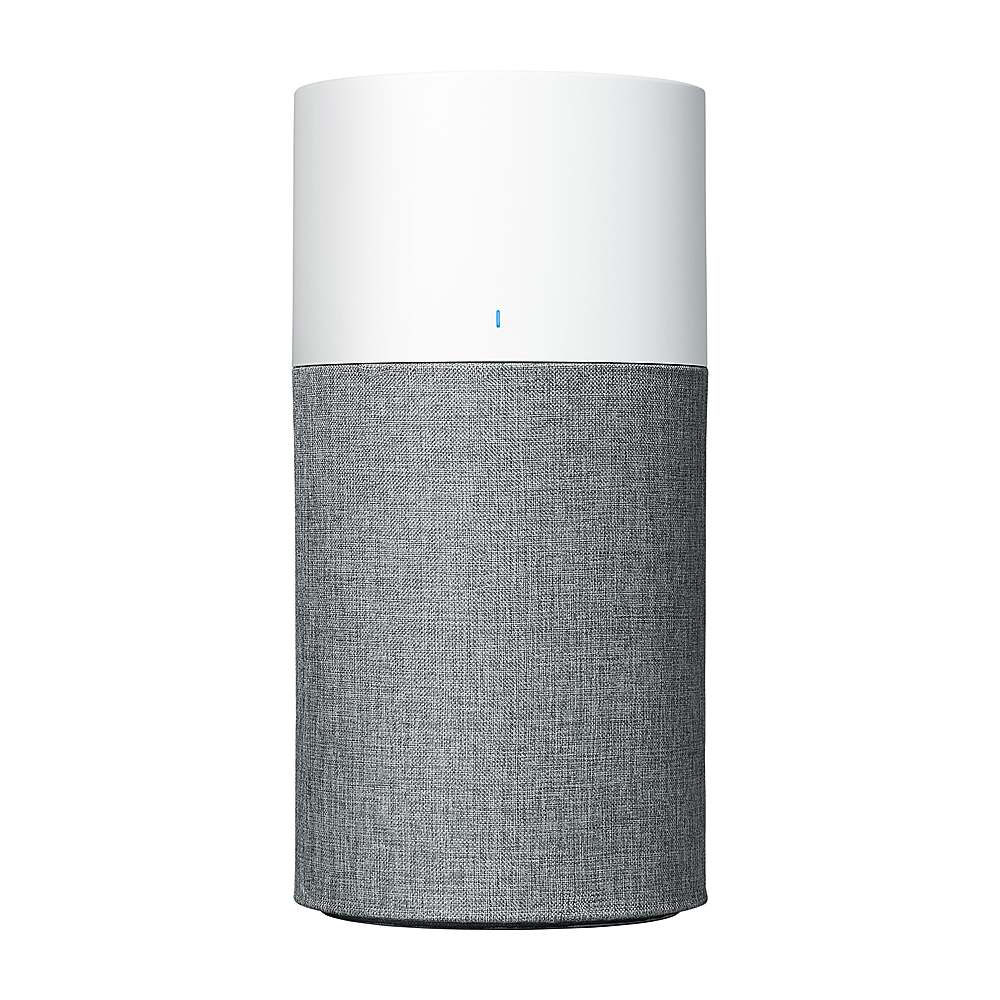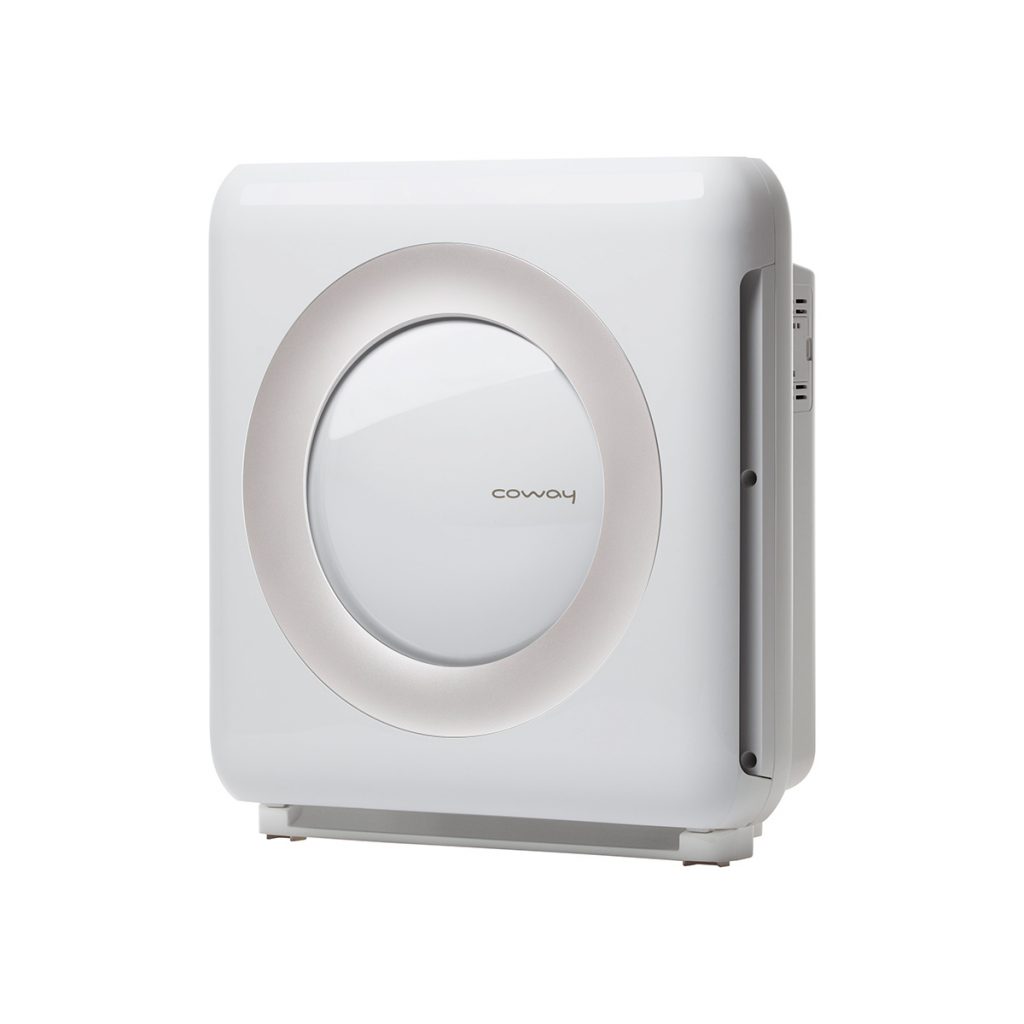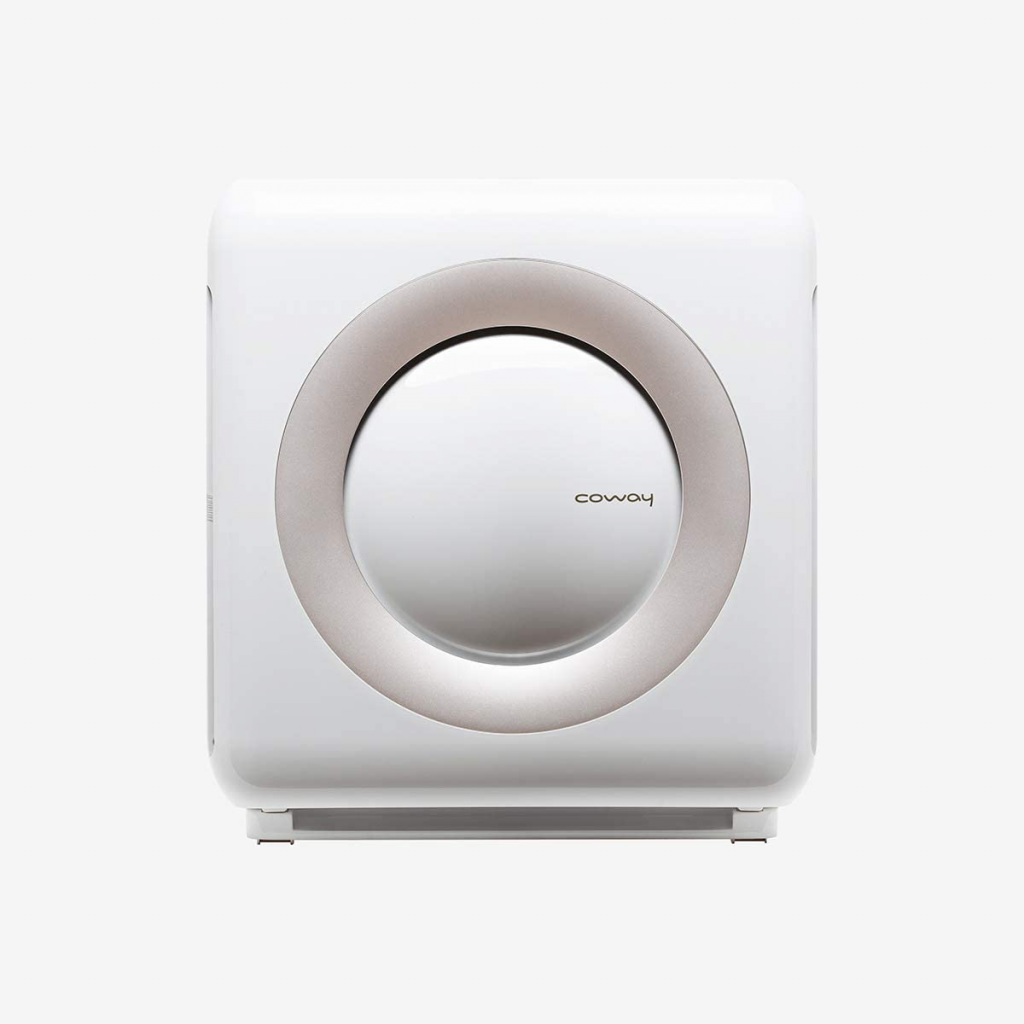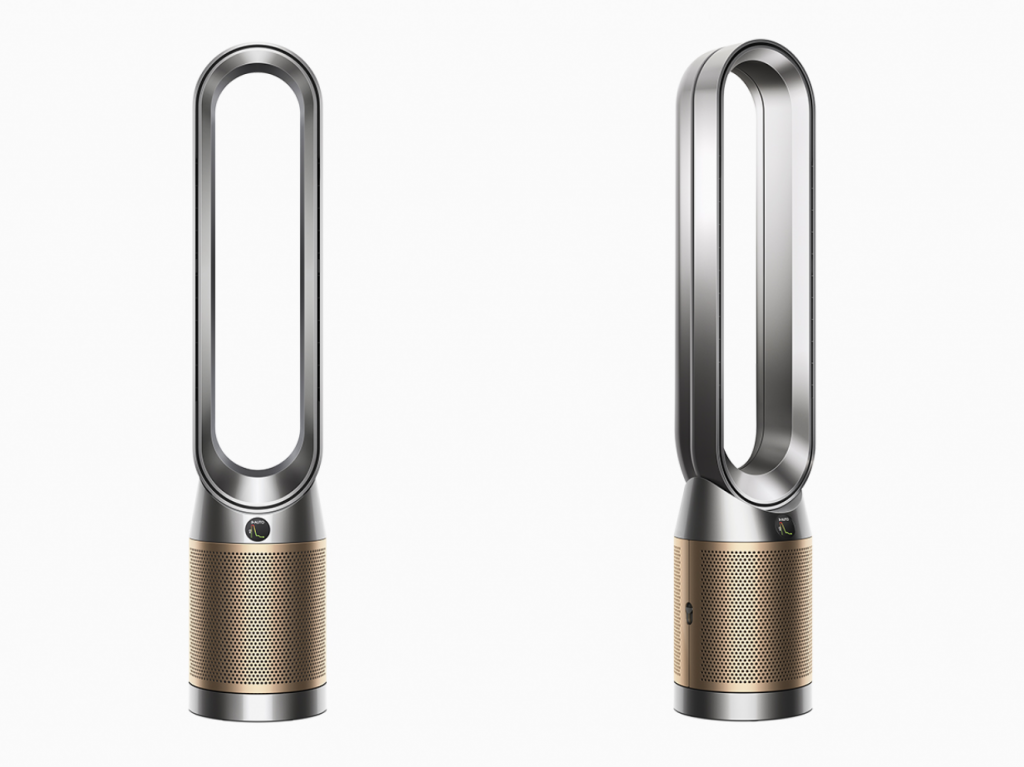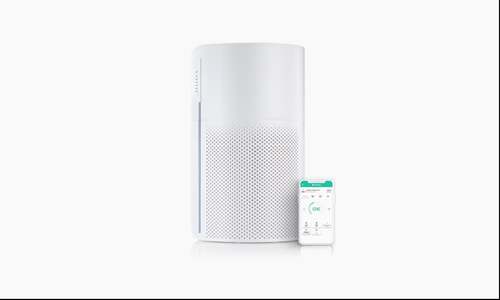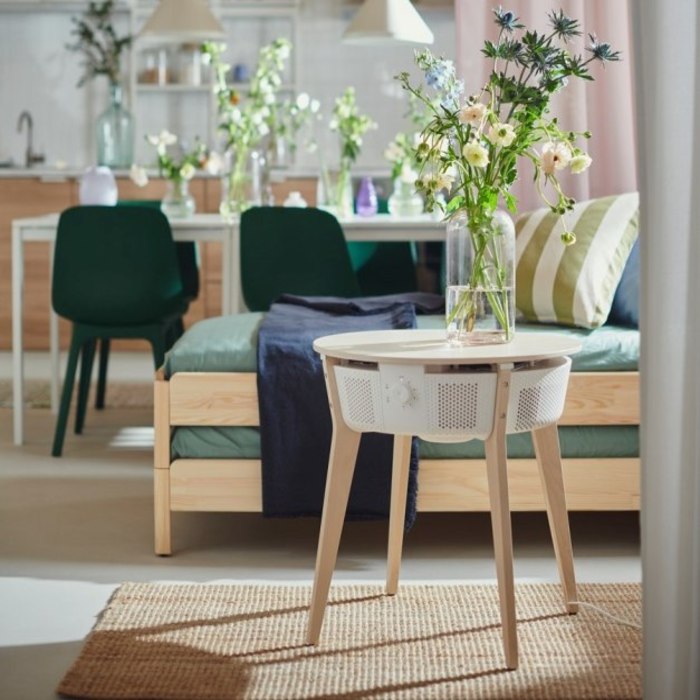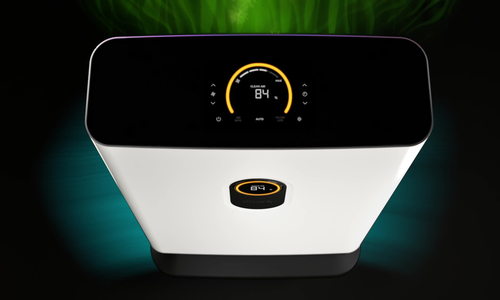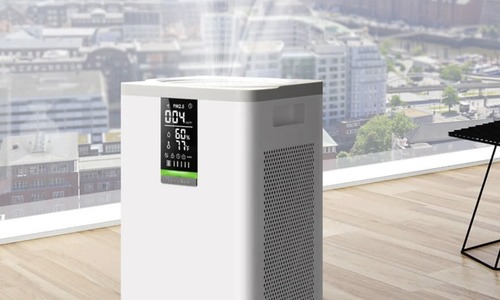“The indoor life” has become an all-too-familiar state for many of us over the past 18 months, with much of our time now confined to the insides of our houses and apartments. With the pandemic continuing to surge, along with the increasingly widespread wildfires wreaking havoc around the globe, “inside” has remained very much the place to be for many. As the pandemic moves into new and less acute phases, it seems safe to say that we’ll still be spending more time at home, and be more attentive to the health and safety of our domestic environments. It should perhaps come as no surprise, then, that this period has seen a significant spike of interest in keeping the air inside our homes as clean as possible. Air purifiers, once a seemingly rare indulgence for the hyper-allergenic (and/or slightly germophobic) among us, have now become home appliance mainstays. In light of the wildfire smoke hitting Northern California, for instance, the Bay Area Air Quality Management District, a state agency based in San Francisco, plans to provide free air purifiers to 3,000 low-income residents who suffer from asthma and other breathing problems.
Indeed, air purifiers have seen a rise in popularity for a number of reasons. First, there’s the simple fact of pandemic life: With all the time spent inside our homes breathing the same air, there’s an urge to ensure that we’re keeping that air as clean as possible. There’s also the transmissibility of COVID-19: While science remains very much unclear as to whether or not air purifiers can significantly prevent the spread of SARS-CoV-2 and its variants, there’s a belief among many that proper air filtration of fine particles can help. Additionally, the increasing frequency of wildfires has given us a more heightened awareness of the air we breathe, and its relative toxicity: According to a recent study, smoke from wildfires may be significantly more harmful than other sources of particulate matter — and air purifiers can certainly help with this. Finally, due in part to these wildfires (as well as climate change, more generally), the length and intensity of pollen seasons a getting worse every year.
“The air purifier market is up significantly,” says Joe Derochowski, home industry advisor at NPD. “The past 12 months have seen growth of 78 percent. Compared to two years ago, it has grown 158 percent.” He says that when the pandemic first hit, those first few weeks saw an immediate spike. “Part of the growth initially was because of our concerns about the virus,” says Derochowski. “As we spent more time at home, there was this sense of getting more germophobic during the pandemic.” Late last summer, with the spread of wildfires particularly acute in the western U.S., saw another sales spike. In addition to home purchases, Derochowski also points to B2B sales: “If you pay attention, you’ll notice that most dentist offices and many stores have air purifiers in them now,” he says.
Once relegated to a handful of dedicated manufacturers, air purifiers are now available from a number of companies. There are devices of virtually every shape and size, designed for a wide range of room sizes. Different models have different filter types — and nearly all are effective against dust, smoke, and pollen, while others even claim to dissipate bad odors and even protect against airborne viruses. Derochowski says that in addition to this expanded range of what these purifiers can filter, there’s a renewed emphasis on both the aesthetics of these devices, as well as a wider variety of models to fit every space and need — from living rooms and offices, to cars and large industrial workspaces.
Many of these new purifiers come with smart features — connecting to smartphone apps, and responding to the relative level of particulate in the air. A number of these connect with home ecosystems, as well. The Sensibo Pure, which, the company claims, removes particles as small as 0.1um, is one of them. The VOCOlinc PureFlow Smart Air Purifier, likewise, constantly measures air quality, humidity, and temperature. (Both work with Apple HomeKit, Amazon Alexa, and Google Assistant). More traditional players in the space remain relatively low-tech in terms of connectivity, but effective nonetheless: IQAir’s HealthPro and Health Pro Plus are tried-and-true, having served home and business customers for decades. The Shark Air Purifier 4 aligns an array of four fans in a low-profile device that continuously tracks and auto-adjusts to the current air quality. A range of affordable options is also available from the likes of Levoit, Smartimi, Winix, and Coway (whose AP-1512HH Mighty and Airmega 200M are popular choices). Many, like the Blueair Pure 311 Auto, offer subscription-based models for replacement filters, which are generally recommended every three to nine months, depending on usage habits.
Even big names in home appliances and electronics are getting involved, sometimes in unique ways. IKEA’s STARKVIND integrates with the company’s TRÅDFRI gateway and IKEA Home app and is available in two versions — a standalone model and, interestingly, another that doubles as a side table (IKEA has also promised eventual integration with HomeKit, Google Assistant, and Alexa). The makers of Instant Pot now have their own purifier as well, in the form of Instant Air (while not Wi-Fi-enabled, it automatically adjusts the fan speed as needed, reducing light and noise levels when it’s dark).
Meanwhile, Dyson’s Purifier Cool Formaldehyde TP09, as the name implies, is aimed at detecting and destroying formaldehyde particulate, while also functioning as a cooling fan. HypoAir, maker of the home purifier Germ Defender and car dashboard-mountable Air Angel, claims its products go a step further, disinfecting surfaces in addition to air; according to the company, its products can disinfect things like germ-harboring doorknobs in a matter of hours. Consumer electronics giants like LG, Samsung, and Honeywell all remain significant players in the air purifier market as well.
While he’s hesitant to attempt to predict the future, Derochowski expects the market to continue to grow for home environment improvement products, and air purifiers are right at the top of that pyramid. As more companies and further innovation comes to the space — alongside the lingering threats of airborne viruses and diminishing air quality — that seems like a pretty safe bet.
SUMMARY:
- Natural disasters, pandemics, and allergies have led to a 78 percent rise in sales of air purifiers over the past 12 months, according to NPD.
- Air purifiers are becoming increasingly smart, with connected features such as remote monitoring and voice assistant capabilities.
- Even brands not known for health and wellness appliances such as IKEA and Instant Pot are releasing their own air purifier models.

BlueAir Pure Auto 311 
Coway Airmega 
Coway Mighty 2 
Dyson TP09 
IQAir HealthPro 
Sensibo Pure 
Ikea Starkvind 
Shark Air Purifier 
VOCOlinc







